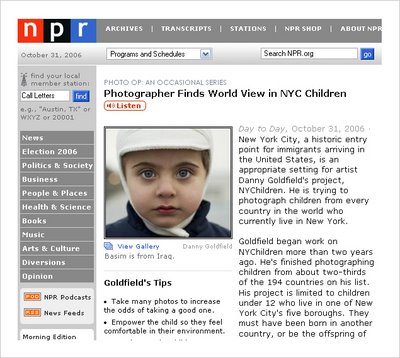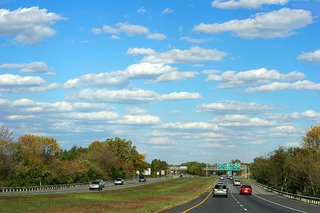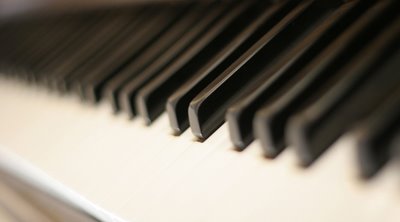Best of the Vineyard
Introduction by Geoff Currier
Interviews by Tom Dresser
Each July, Martha's Vineyard Magazine polls a group of profoundly knowledgeable voters to find out which businesses on the Island are the very best at what they do. This year we canvassed our subscribers and those who purchased the magazine at a newsstand. Over the fall, winter, and spring, we received some 400 ballots, so the list doesn't get more definitive or Vineyard-specific than this one. (Look for the 2007 Best of the Vineyard ballot in the August edition of the magazine and on line at www.mvmagazine.com.)
We've been conducting this vote for a few years now, and that put us in mind of history: What would we receive, we wondered, if we asked the winning companies to open their scrapbooks and send us pictures and mementos from the earliest days of their enterprises? Tom Dresser, our reporter for the Best of the Vineyard section this year, came into the office with a fine collection of Vineyard artifacts and stories. Just have a look.
(Note: The second name is usually the runner-up, and in some cases there's a tie.)
BEST ANTIQUE STORE
Past and Presents
42 Main Street, Edgartown. 508-627-6686.
37 Main Street, Edgartown. 508-627-3992.
Tisbury Antiques
339 State Road, Vineyard Haven. 508-693-8333.
BEST ART GALLERY
The Granary Gallery
636 Old County Road, West Tisbury. 508-693-0455.
The Christina Gallery
32 North Water Street, Edgartown. 508-627-8794.
BEST AUTO REPAIR SHOP
Cars Unlimited
North Line Road, Edgartown. 508-693-6544.
Courtesy Motors
9 Beach Road, Vineyard Haven. 508-693-5010.
BEST BAIT AND TACKLE
Coop's Bait and Tackle
147 West Tisbury Road, Edgartown. 508-627-3909.
Dick's Bait Shop
New York Avenue, Oak Bluffs. 508-693-7669.
BEST BAKERY
Humphreys
Woodland Market, State Road, Tisbury. 508-693-1079.
1 Lake Street, Oak Bluffs. 508-696-6890.
33 Winter Street, Edgartown. 508-627-7029.
The Scottish Bakehouse
977 State Road, Tisbury. 508-693-6633.
BEST BANK
Martha's Vineyard Co-operative Bank
Main office: 40 South Main Street, Vineyard Haven. 508-693-0161.
Branches in Oak Bluffs and West Tisbury.
Dukes County Savings Bank
Branches in Chilmark (508-645-3811), Edgartown (508-627-4266 and 9966),
Oak Bluffs (508-696-9355), Tisbury (508-693-2666), and West Tisbury (508-693-3232).
BEST BAR/PUB
The Newes from America
23 Kelley Street, Edgartown. 508-627-4397.
Offshore Ale Company
30 Kennebec Avenue, Oak Bluffs. 508-693-2626.
BEST BED AND BREAKFAST
Hob Knob Inn
128 Main Street, Edgartown. 508-627-9510.
RUNNER-UP
Thorncroft Inn
460 Main Street, Vineyard Haven. 508-693-3333.
BEST BIKE RENTALS
Martha's Bike Rentals
Five Corners, Vineyard Haven. 508-693-6593.
Anderson's Bike Rentals
23 Circuit Avenue Extension, Oak Bluffs. 508-693-9346.
BEST BOOKSTORE
Bunch of Grapes
44 Main Street, Vineyard Haven. 508-693-2291.
Edgartown Books
44 Main Street, Edgartown. 508-627-8463.
BEST BREAKFAST RESTAURANT
ArtCliff Diner
39 Beach Road, Vineyard Haven. 508-693-1224.
Linda Jean's Restaurant
25 Circuit Avenue, Oak Bluffs. 508-693-4093.
BEST BURGER
Offshore Ale Company
30 Kennebec Avenue, Oak Bluffs. 508-693-2626.
The Wharf Pub and Restaurant
Lower Main Street, Edgartown. 508-627-9966.
BEST CANDY STORE
Chilmark Chocolates
State Road, Chilmark. 508-645-3013.
Ice Cream and Candy Bazaar
5 Dock Street, Edgartown. 508-627-8735.
BEST CATERER
Fella Caters
P.O. Box 1413, Vineyard Haven MA 02568. 508-693-1572.
V. Jaime Hamlin and Sons
71 Lake Street, Vineyard Haven. 508-693-6313.
BEST CHOWDER
The Net Result
79 Beach Road, Vineyard Haven. 508-693-6071.
Home Port Restaurant
North Road, Menemsha. 508-645-2679.
BEST CLAMBAKE
Bill Smith's MV Clambake
Edgartown. 508-627-8809. RUNNER-UP
Fella Caters
P.O. Box 1413, Vineyard Haven MA 02568. 508-693-1572.
BEST CHILDREN'S CLOTHING STORE
Basics
22 Circuit Avenue, Oak Bluffs. 508-693-8819.
BEST MEN'S CLOTHING STORE
Sundog
41 Main Street, Edgartown. 508-627-5254.
Brickman's
8 Main Street, Vineyard Haven. 508-693-0047.
33 Main Street, Edgartown. 508-627-4700.
BEST WOMEN'S CLOTHING STORE
The Green Room
71 Main Street, Vineyard Haven. 508-693-6888.
Laughing Bear
33 Circuit Avenue, Oak Bluffs. 508-693-9342.
BEST COFFEE SHOP
Mocha Mott's
10 Circuit Avenue, Oak Bluffs. 508-696-1922.
15 Main Street, Vineyard Haven. 508-693-3155.
Espresso Love
17 Church Street, Edgartown. 508-627-9211.
BEST DELI
Humphreys
Woodland Market, State Road, Tisbury. 508-693-1079.
1 Lake Street, Oak Bluffs. 508-696-6890.
33 Winter Street, Edgartown. 508-627-7029.
Menemsha Deli
24 Basin Road, Menemsha. 508-645-9902.
BEST DINNER RESTAURANTS
Sweet Life Café
63 Circuit Avenue, Oak Bluffs. 508-696-0200.
Lambert's Cove Inn and Restaurant
Off Lambert's Cove Road, West Tisbury. 508-693-2298.
BEST FISH AND CHIPS
Sandy's Fish and Chips
At John's Fish Market, State Road, Vineyard Haven. 508-693-1220.
The Newes from America
23 Kelley Street, Edgartown. 508-627-4397.
BEST FISH MARKET
The Net Result
Tisbury Marketplace, Beach Road, Vineyard Haven. 508-693-6071.
Edgartown Seafood
138 Cooke Street, Edgartown. 508-627-3791.
BEST FISHING CHARTER BOAT
Skipper Party Boat
On the bulkhead, across from the Island Queen, Oak Bluffs. 508-693-1238.
BEST FITNESS CENTER
Vineyard Tennis Center, Workout and Spa
22 Airport Road, West Tisbury. 508-696-8000.
RUNNER-UP
Mansion House Health Club and Spa
9 Main Street, Vineyard Haven. 508-693-2200.
BEST FLORIST
Donaroma's Nursery and Landscape Services
271 Upper Main Street, Edgartown. 508-627-8366.
RUNNER-UP
Morrice Florist
149 State Road, Vineyard Haven. 508-693-0392.
BEST FRIED CLAMS
Giordano's Restaurant
107 Circuit Avenue, Oak Bluffs. 508-693-0184.
29 Basin Road, Menemsha. 508-645-9239.
BEST GARDEN CENTER/NURSERY
Donaroma's Nursery and Landscape Services
271 Upper Main Street, Edgartown. 508-627-8366.
Vineyard Gardens
484 State Road, West Tisbury. 508-693-8512.
BEST GIFT SHOP
Rainy Day
66 Main Street, Vineyard Haven. 508-693-1830.
Willoughby Essentials
12 North Water Street, Edgartown. 508-627-3369.
BEST HAIRDRESSER
bouclé
12 North Water Street, Edgartown. 508-627-3853.
Wavelengths
223 Upper Main Street, Edgartown. 508-627-7066.
BEST HARDWARE STORE
Shirley's Hardware
374 State Road, Vineyard Haven. 508-693-3070.
H.N. Hinckley and Sons, Inc./Ace Hardware
27 Beach Road, Vineyard Haven. 508-693-0075.
BEST HOME FURNISHINGS
Vineyard Decorators
Martha's Vineyard Airport. 508-693-9197.
Island Home Furnishings
412 State Road, Tisbury. 508-693-6665.
BEST HOTEL/INN
Harbor View Hotel
131 North Water Street, Edgartown. 508-627-7000.
Mansion House
9 Main Street, Vineyard Haven. 508-693-2200.
BEST ICE CREAM SHOP
Ben and Bill's
Chocolate Emporium, 20 A Circuit Avenue, Oak Bluffs.
Mad Martha's
20 Union Street, Vineyard Haven.
12 Circuit Avenue, Oak Bluffs.
7 North Water Street, Edgartown.
BEST JEWELER
CB Stark Jewelers
53 Main Street, Vineyard Haven. 508-693-2284.
27 North Water Street, Edgartown. 508-627-1260.
Claudia
51 Main Street, Edgartown. 508-627-8306.
34 Main Street, Vineyard Haven. 508-693-5465.
BEST LANDSCAPE COMPANY
Landscope Landscape Construction
MV Business Park, 16 A Street, Edgartown. 508-696-8812.
Donaroma's Nursery and Landscape Services
271 Upper Main Street, Edgartown. 508-627-8366.
BEST LIVE BAND
Johnny Hoy and the Bluefish
johnnyhoyandthebluefish.com. 508-696-3007.
Entrain
P.O. Box 2223, Vineyard Haven MA 02568. 508-693-1291.
BEST LUNCH RESTAURANT
Slice of Life
50 Circuit Avenue, Oak Bluffs. 508-693-3838.
Linda Jean's Restaurant
25 Circuit Avenue, Oak Bluffs. 508-693-4093.
BEST NATURE WALK
Felix Neck Wildlife Sanctuary
Off the Edgartown–Vineyard Haven Road, Edgartown. 508-627-4850.
BEST NIGHT ENTERTAINMENT SPOT
The Hot Tin Roof
Closed, but see our feature story on the early days.
BEST PACKAGE STORE
Jim's Package Store
27 Lake Avenue, Oak Bluffs. 508-693-0236.
Our Market
2 East Chop Drive, Oak Bluffs. 508-693-3000.
BEST PIZZA
Giordano's Restaurant
107 Circuit Avenue, Oak Bluffs. 508-693-0184.
Lattanzi's Pizzeria
Post Office Square, Edgartown. 508-627-9084.
BEST PLACE TO CATCH A STRIPED BASS
If we told you, we'd be killed.
BEST PLACES TO GET PICNIC FOOD
Soigne
190 Upper Main Street, Edgartown. 508-627-8489.
Louis' Tisbury Café and Take Out
250 State Road, Tisbury. 508-693-3255.
BEST REALTOR COMPANIES
Coldwell Banker / Landmarks Real Estate
15 Church Street, Vineyard Haven. 508-693-6866.
55 Circuit Avenue, Oak Bluffs. 508-696-8266.
Island Real Estate
107 Beach Road, Vineyard Haven. 508-693-4800.
BEST SEAFOOD RESTAURANTS
Home Port Restaurant
North Road, Menemsha. 508-645-2679.
The Square Rigger
At the Triangle, Edgartown. 508-627-9968.
BEST SHOE STORES
Brickman's
8 Main Street, Vineyard Haven. 508-693-0047.
Petunia's Shoes
37 Main Street, Edgartown. 508-627-7505.
BEST SOURCES FOR FRESH ISLAND PRODUCE
Morning Glory Farm
100 Meshacket Road, Edgartown. 508-627-9003.
West Tisbury farmer's Market
Grange Hall, West Tisbury. (Wednesdays and Saturdays.)
BEST SUNDAY BRUNCH
Coach House, Harbor View Hotel
131 North Water Street, Edgartown. 508-627-7000.
Farm Neck Golf Club Café
1 Farm Neck Way, off County Road, Oak Bluffs. 508-693-3560.
BEST TAXI SERVICE
AdamCab
256 Edgartown–Vineyard, Haven Road, Edgartown. 1-800-281-4462.
Mario's Taxi
3 James Way, West Tisbury. 508-693-8399.
BEST T-SHIRTS
The Black Dog
11 Water Street, Vineyard Haven. 508-696-8182.
37 Circuit Avenue, Oak Bluffs. 508-696-9826.
Lower Main Street, Edgartown. 508-627-3360.
Menemsha Blues
2 Basin Road, Menemsha. 508-645-3800.
36 Water Street, Vineyard Haven. 508-693-9599.
BEST VIDEO STORES
Island Entertainment
395 State Road, Vineyard Haven. 508-693-7441.
Hollywood Video
244 Edgartown–Vineyard Haven Road, Edgartown. 508-627-3533.













